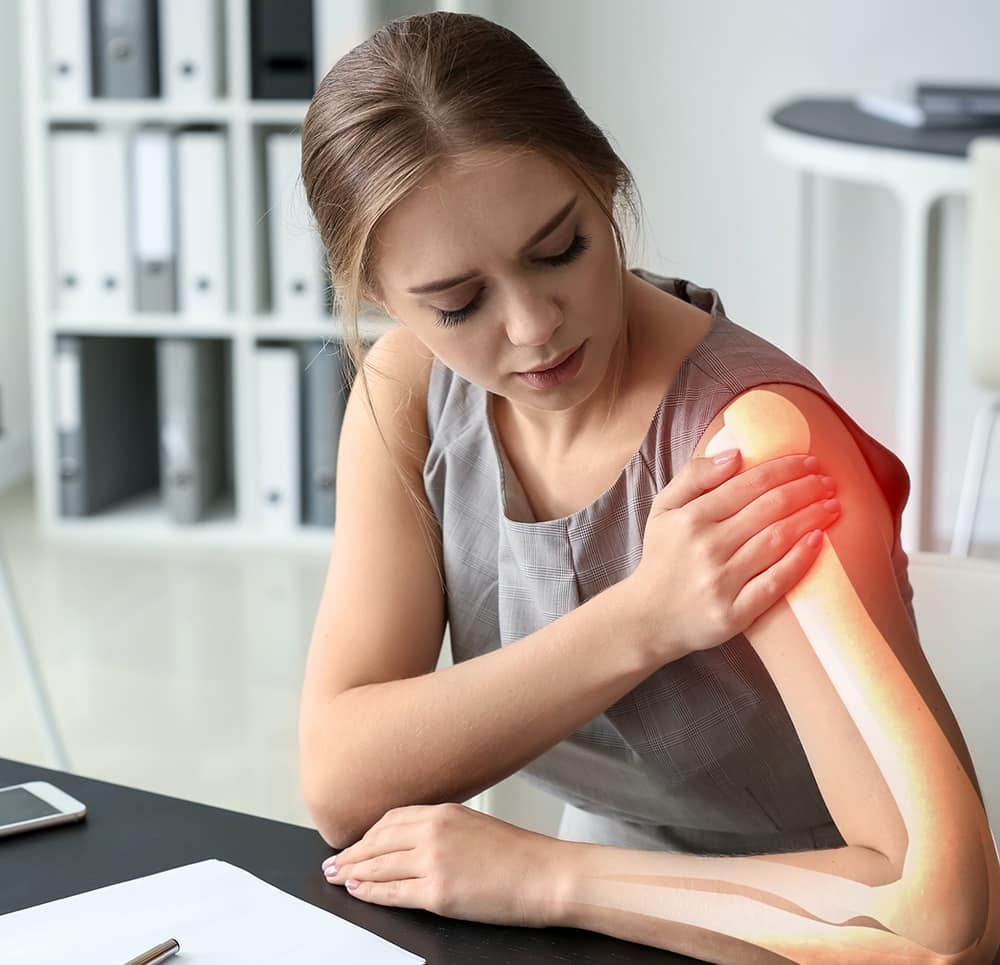Shoulder Care
Rotator Cuff Injury is a strain or tear in the group of tendons and muscles that hold your shoulder joint together and helps move your shoulder. Symptoms include arm and shoulder pain, shoulder tenderness, weakness and loss of movement. Minor tears can be left to heal by themselves with help from ice packs, exercises given to you by your doctor, physical therapy or anti-inflammatory drugs. An arthroscopic procedure in which a doctor inserts a small instrument on your shoulder joint can be performed on more severe cases where torn tendons can be trimmed and left to heal. Larger tears can be stitched back together. Physical therapy will help strengthen your shoulder and speed up your recovery.
Your Shoulder Surgery
The shoulder is a ball and socket joint. The ball portion of the joint is called the humeral head, and is part of the humerus (upper arm bone). The socket portion is called the glenoid, and is part of the scapula (shoulder blade). The humeral head (ball) fits into the glenoid (socket) and the two bones rub together as the shoulder moves.
Ball and Socket Of Healthy Shoulder Joint Surfaces
In a healthy shoulder joint, the surfaces of these bones where the ball and socket rub together are very smooth and covered with a tough protective tissue called cartilage. Arthritis causes damage to the bone surfaces and cartilage. These damaged surfaces eventually become painful as they rub together.
Arthritic Shoulder Joint Surfaces
There are many ways to treat the pain caused by arthritis. One way is total shoulder replacement surgery. The decision to have total shoulder replacement surgery should be made very carefully after consulting your doctor and learning as much as you can about the shoulder joint, arthritis, and the surgery.
In total shoulder replacement surgery, the ball and socket that have been damaged by arthritis are removed and replaced with artificial parts made of metal and a very durable plastic material. We call these artificial parts “implants.” These implants are shaped so that the shoulder joint will move in a way that is very similar to the way the joint moved when it was healthy.
Getting to the Joint
The patient is first taken into the operating room and positioned on a special operating table as though lounging in a beach chair. The arm is placed on a board that will allow the surgeon to move it up or down as necessary during the surgery. Anesthesia is given and, when it has taken effect, the skin around the shoulder and upper arm is thoroughly scrubbed and sterilized with an antiseptic liquid.
An incision about six inches long is then made over the shoulder joint. The incision is gradually made deeper through muscle and other tissue until the bones of the shoulder joint are exposed
Replacing the Socket Portion of the Joint
The implant that replaces the socket consists of a durable plastic insert with a very smooth, cupped surface.
Removing the Surface of the Socket
The arm is maneuvered until the humeral head is dislocated from the socket. Special precision instruments are then used to remove the damaged cartilage and bone surface from the glenoid, and to shape the socket so it will match the shape of the implant that will be inserted. Holes are then drilled into the socket to accommodate the fixation pegs on the implant. These pegs help stabilize the implant.
Inserting the Implant
The socket implant is attached by using a special kind of cement for bones. The cement is pressed into the holes. The implant is then inserted.
Replacing the Ball Portion of the Joint
The implant that replaces the ball consists of a long metal stem that fits down into the humerus. A metal head in the shape of a partial sphere is mounted on top of this stem. This head contacts the socket implant in the shoulder blade.
Preparing the Humeral Canal
Special instruments are used to clear some of this soft bone from the canal.
Using a precision guide and saw, the damaged rounded portion (ball) of the humerus is removed.
Inserting the Implant
The metal stem implant may be held in place by either using the special bone cement, or by making it fit very tightly in the canal. The surgeon will choose the best method, depending on the patient’s age and expected activity level.
If cement is used, it is injected into the canal first, and then the implant is inserted into the canal. If cement is not used, the implant is simply inserted into the canal.
On some implants, the stem and partial sphere are one piece. On others, they may be two separate pieces. If the partial sphere is a separate piece, it is usually secured to the top of the stem after the stem has been inserted.
Closing the Wound
When all the implants are in place, the surgeon places the new ball that is now part of the upper arm bone into the new socket that is part of the shoulder blade. If necessary, the surgeon may adjust the ligaments that surround the shoulder to achieve the best possible shoulder function.
When the ligaments are properly adjusted, the surgeon sews the layers of tissue back into their proper position. A plastic tube may be inserted into the wound to allow liquids to drain from the site during the first few hours after surgery. After the tube is inserted, the edges of the skin are sewn together, and a sterile bandage is applied to the shoulder. Then, the patient is taken to the recovery room.
Always call us directly with your questions and concerns!
Call Us At (573)-248-1010
“We have had excellent doctors. Staff is very courteous. They are interested in our overall health issues. I would recommend this Clinic & doctors to everyone“
Reita Klauser
Patient

